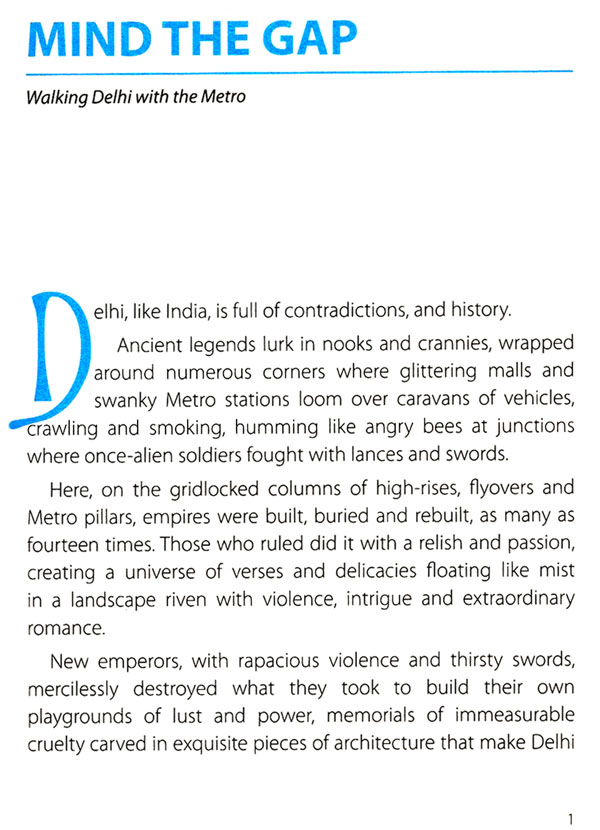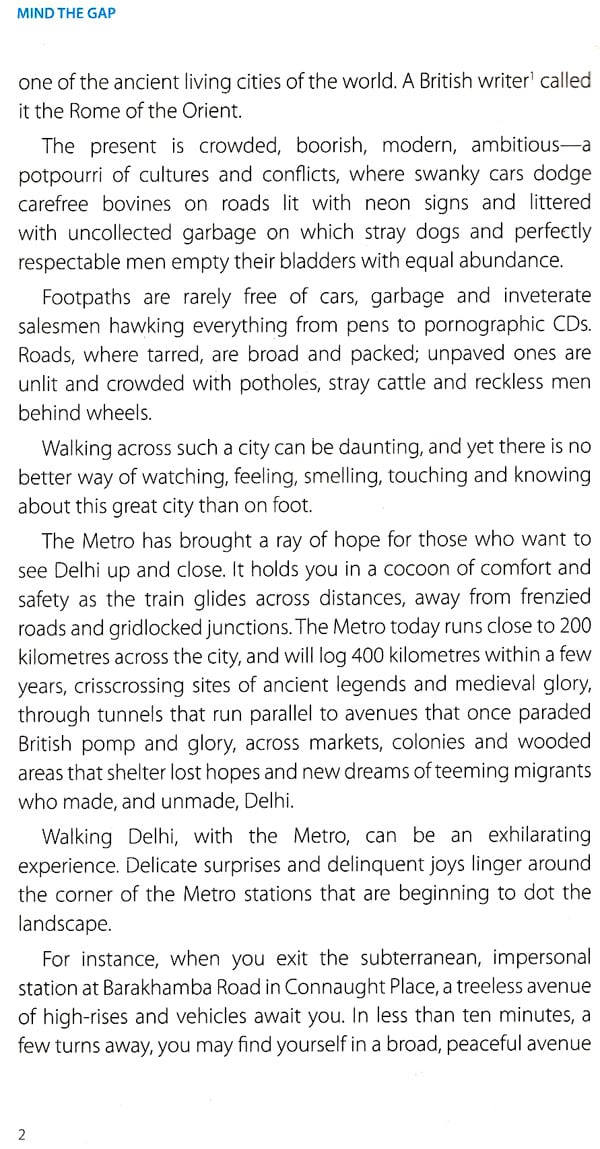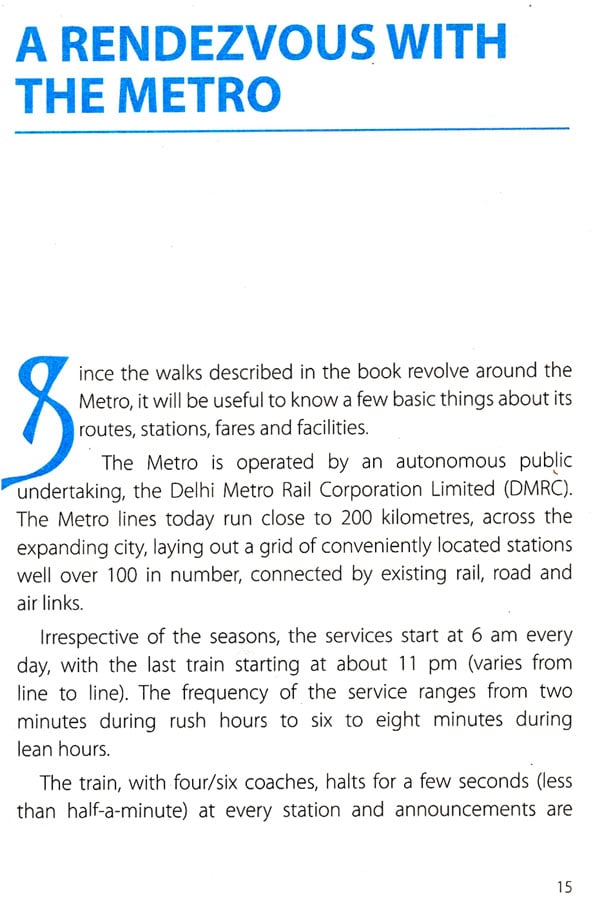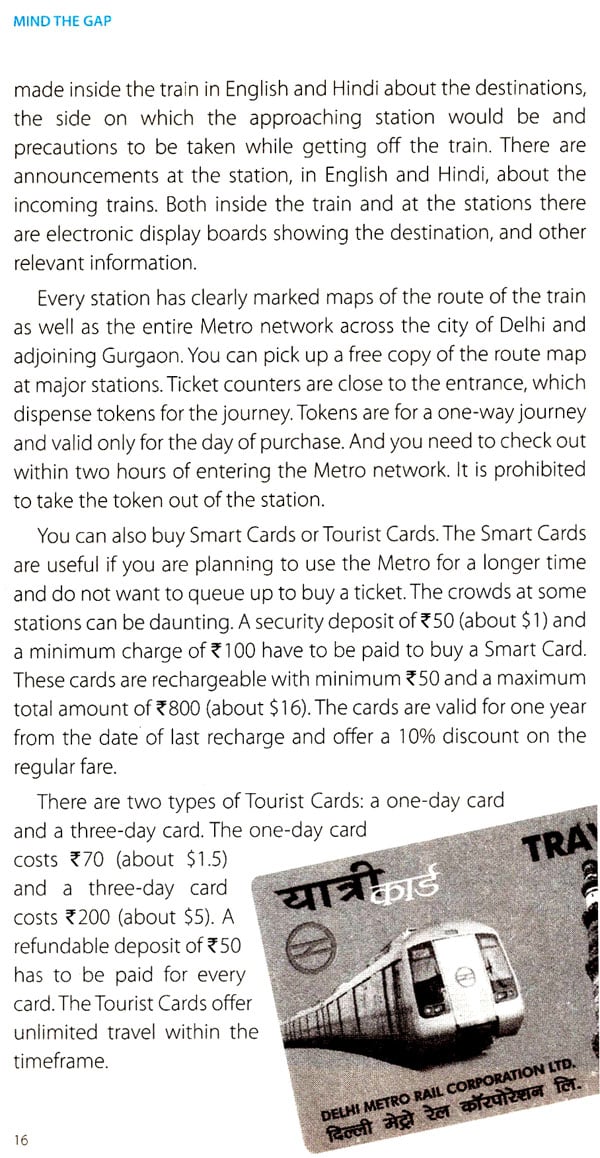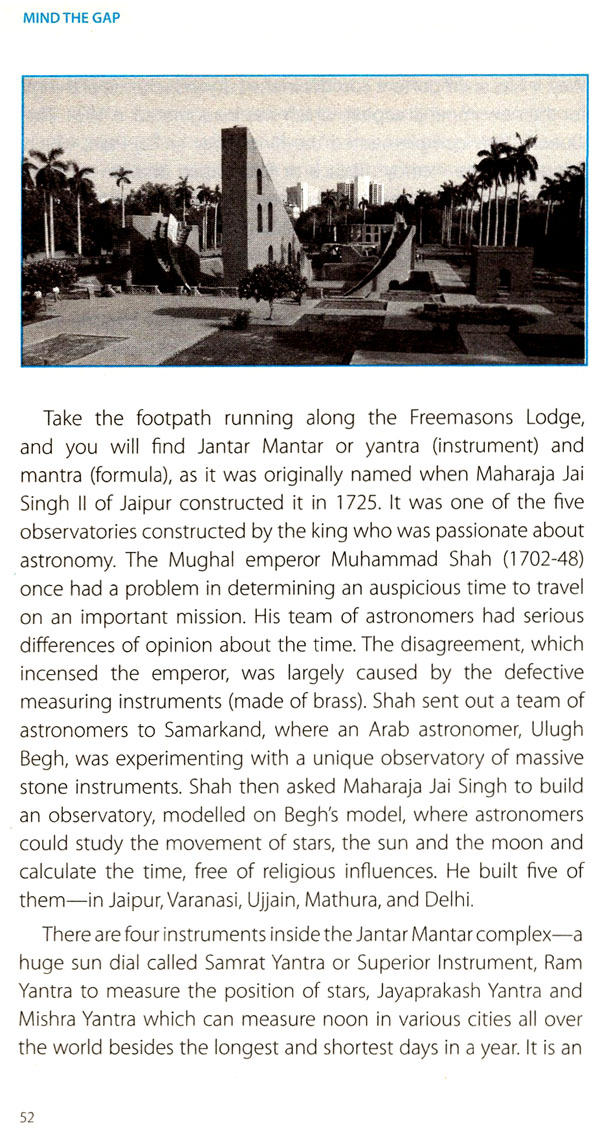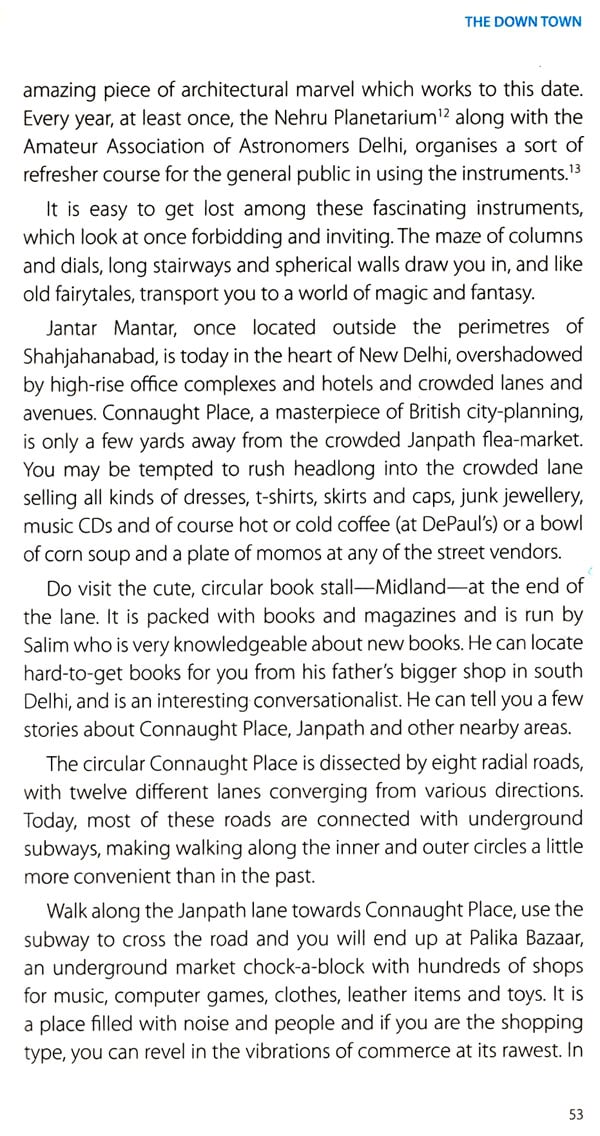
Mind the Gap: Walking Delhi with the Metro
Book Specification
| Item Code: | NAU182 |
| Author: | Wilson John |
| Publisher: | Amaryllis |
| Language: | ENGLISH |
| Edition: | 2013 |
| ISBN: | 9789381506097 |
| Pages: | 182 (Throughout B/W Illustrations) |
| Cover: | PAPERBACK |
| Other Details | 9.00 X 5.50 inch |
| Weight | 170 gm |
Book Description
Delhi, like India, is full of contradictions and history. Here empires were built, buried and rebuilt, as many as fourteen times. Those who ruled did with a relish and passion, creating a universe of verses and delicacies. The present is modern, crowded, ambitious - a potpourri of cultures and conflicts, where swanky cars dodge carefree bovines on roads lit with neon signs, and where perfectly respectable men empty their bladders with equal abundance.
The Metro has brought a ray of hope for those who want to see Delhi up-and-close on foot. Today, the Metro runs close to 200 kilometres across the city; it would log 400 kilometres within a few years, crisscrossing sites of ancient legends and medieval glory. This pocket-friendly book is a delightful guide and friend. Helpful directional maps and meticulously detailed sights and sounds of walking routes leave you pleasantly tired but exuberant in no less measure.
This is the first and only guide to Delhi's lanes and monuments, people and places, poets and djinns, and the Delhi Metro that traverses like, a silver worm of time across myths and folklores and tales of valour and empire-making that made the city a tempting and tempestuous beacon of riches and glory for millennia.
WILSON JOHN spent years growing up in a street named after an anonymous British deputy commissioner, Major H.C. Beadon. It was no less puzzling that the biggest recreation ground was called Ajmal Khan Road, both named after a renowned expert of Greek medicine, Hakim Ajmal Khan, who lived in Ballimaran, where another more famous citizen once reigned, Mirza Asadullah Khan Ghalib.
Wilson now lives, with his wife and a precocious teenager, in a colony across the river, along the metro line, where once peacocks danced among the ripening wheat fields and tiny villages, that not long ago was the battleground of Maratha forces and the British Army. The only physical evidence of the Battle of Patparganj fought in 1803, is a memorial hidden within the Noida Golf Course, the last but one stop on the Dwarka-Noida Metro line.
**Contents and Sample Pages**

